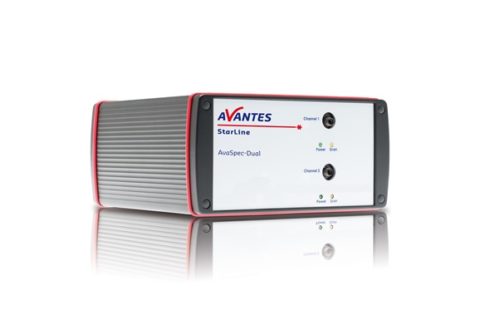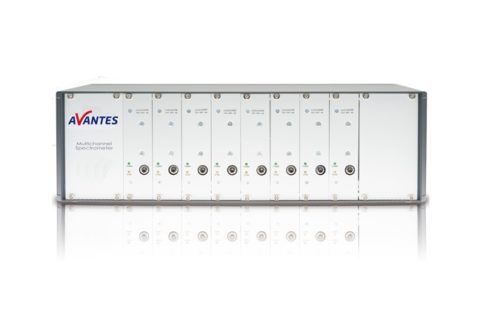Spectrometers
A fiber-optic spectrometer is an instrument used to measure properties of light (often using a light source, a fiber-optic cable and software) over a specific part of the electromagnetic spectrum. In the case of fiber-optic spectroscopy, the focus lies on ultraviolet radiation, the visible spectrum, and near-infrared radiation. The spectrum is often displayed in wavelengths which, in the area of interest for a spectrometer, are measured in nanometers (nm) or micrometers (µm). Avantes spectrometers operate in the range of 200-2500 nm.
Avantes spectrometers generally consist of an entrance slit, which is where the light enters the spectrometer via a fiber-optic cable, a collimating mirror that causes the light to concentrate into a parallel beam, a grating (refractive element), focusing optics that deflect the refracted light to reach the electronics and a detector that converts the measured light into comprehensible data in our software. Every one of Avantes spectrometers is optimized with light traps and filters to make sure the detector captures the minimal amount of stray light to make your measurement as accurate as possible.
A variety of spectrometer models are available, each offering unique advantages to optimize your measurement, such as compact sizing, ultra-sensitivity, cooling for higher performance, speed or the ability to measure in ranges besides the standard UV and visible range.
A spectrometer is used in a variety of applications using various techniques, such as absorbance spectroscopy to measure the absorption of wavelengths by materials diluted in e.g. fluids and powders and reflectance spectroscopy to measure the intensity of reflected light off an object or surface. Other popular spectroscopy techniques are LIBS (laser-induced breakdown spectroscopy) and Raman.








